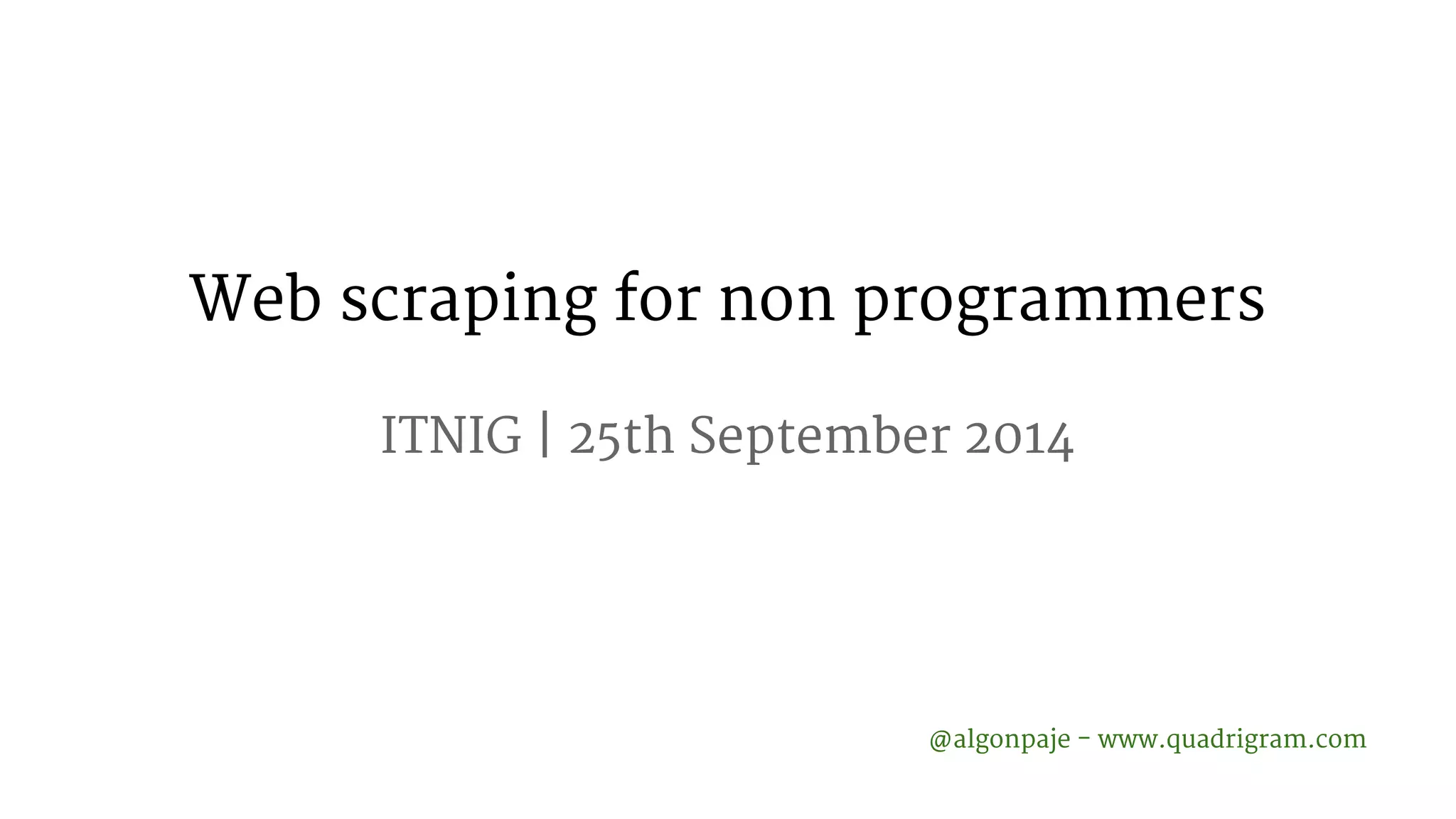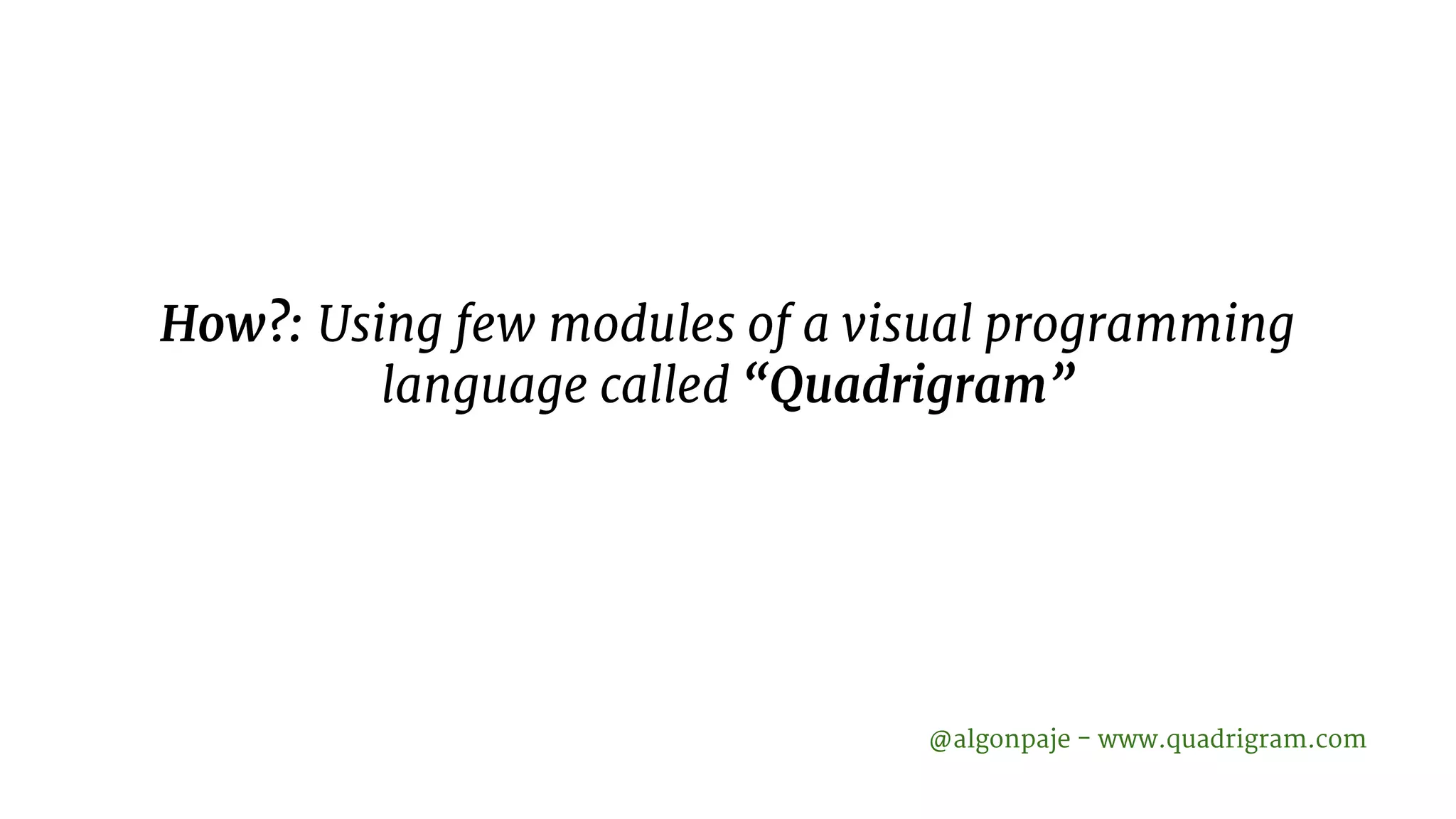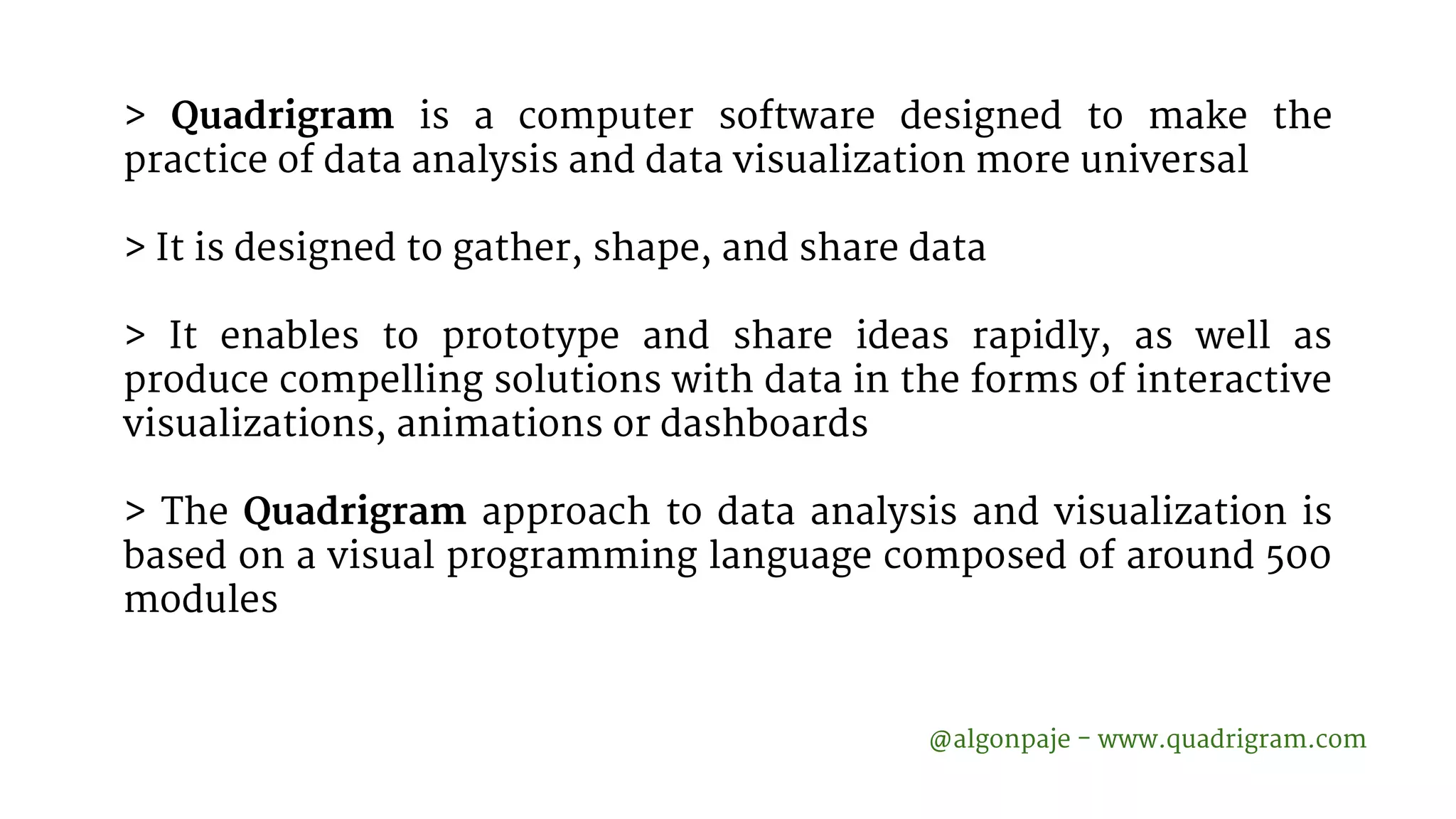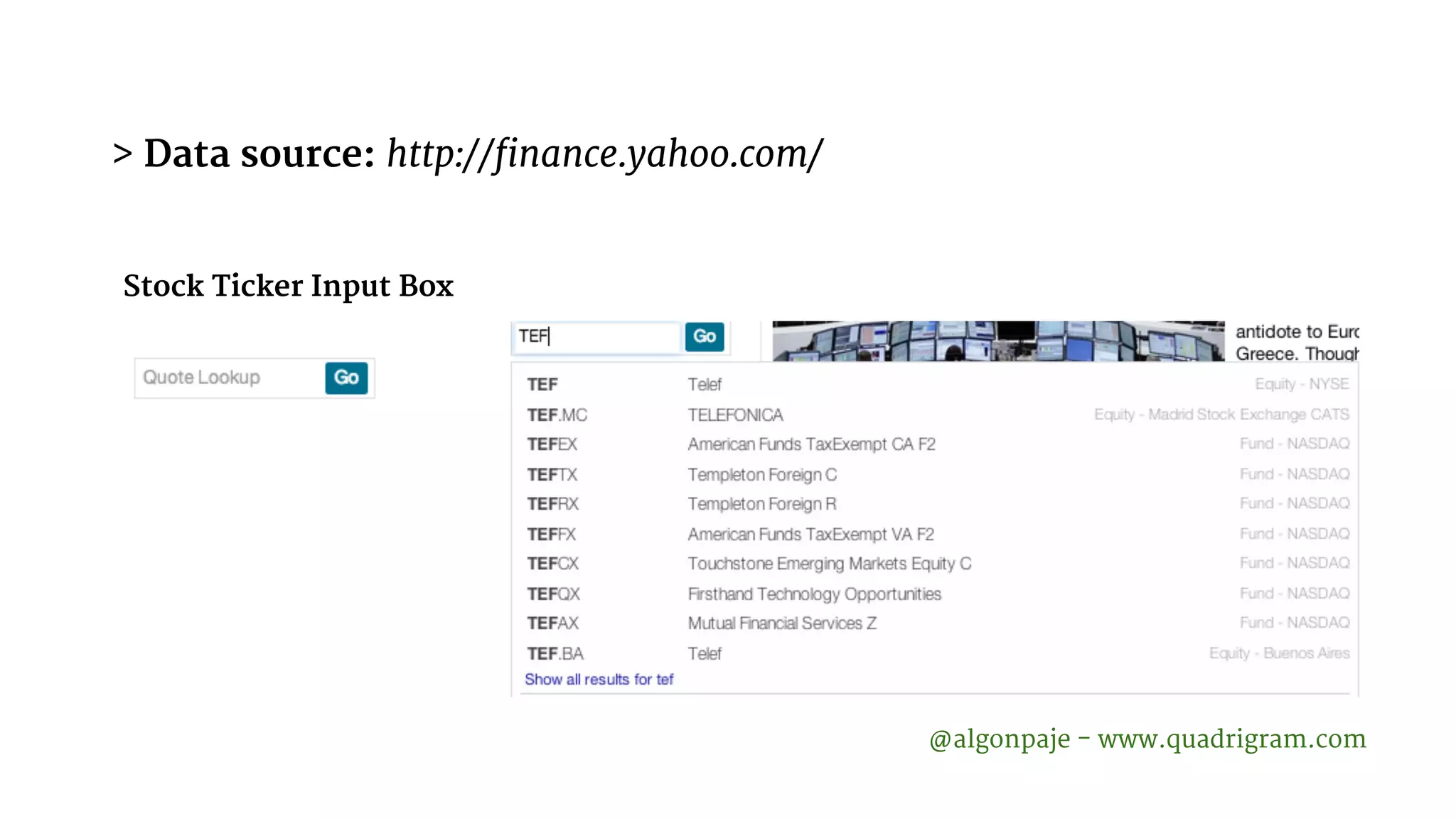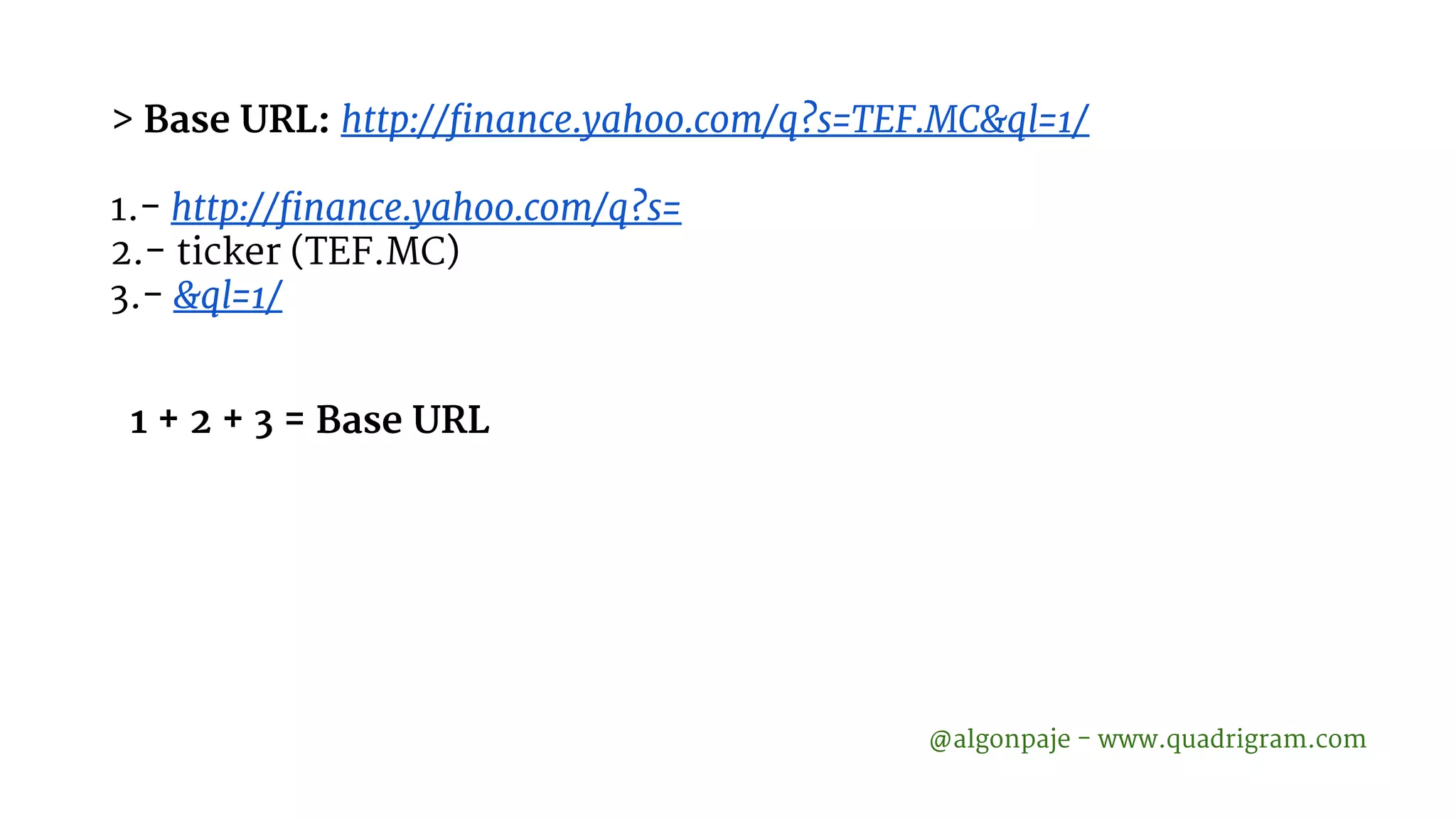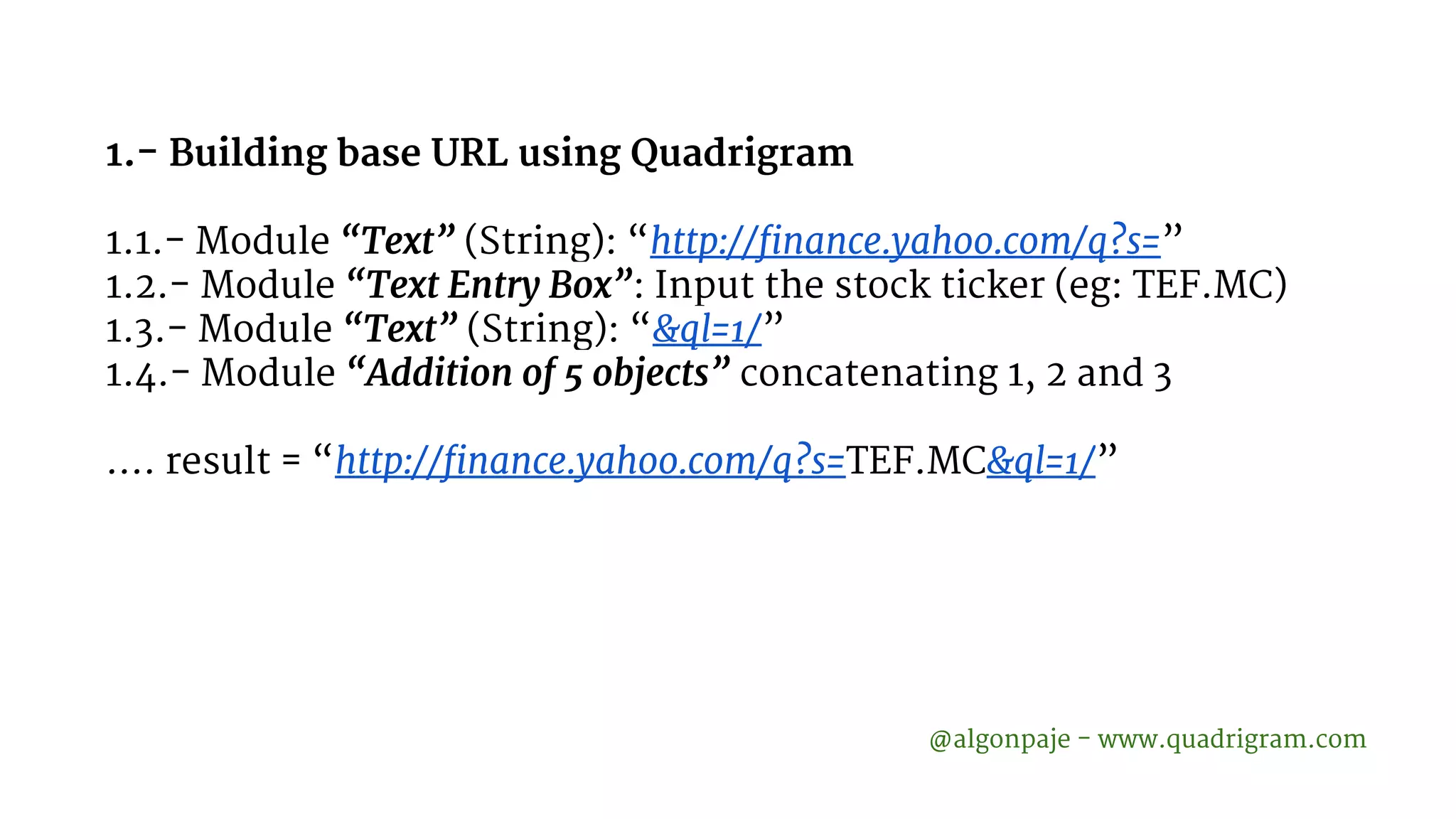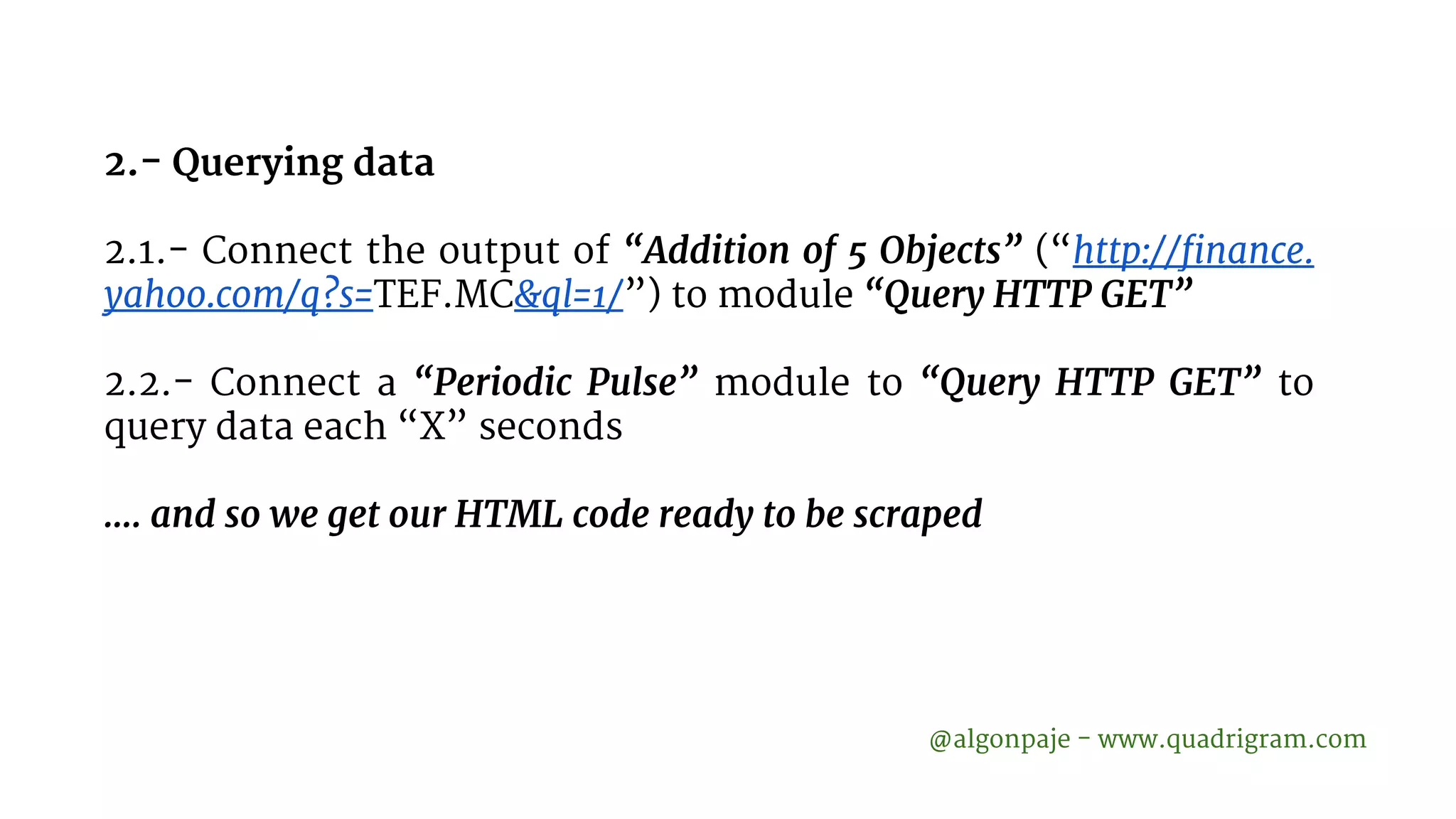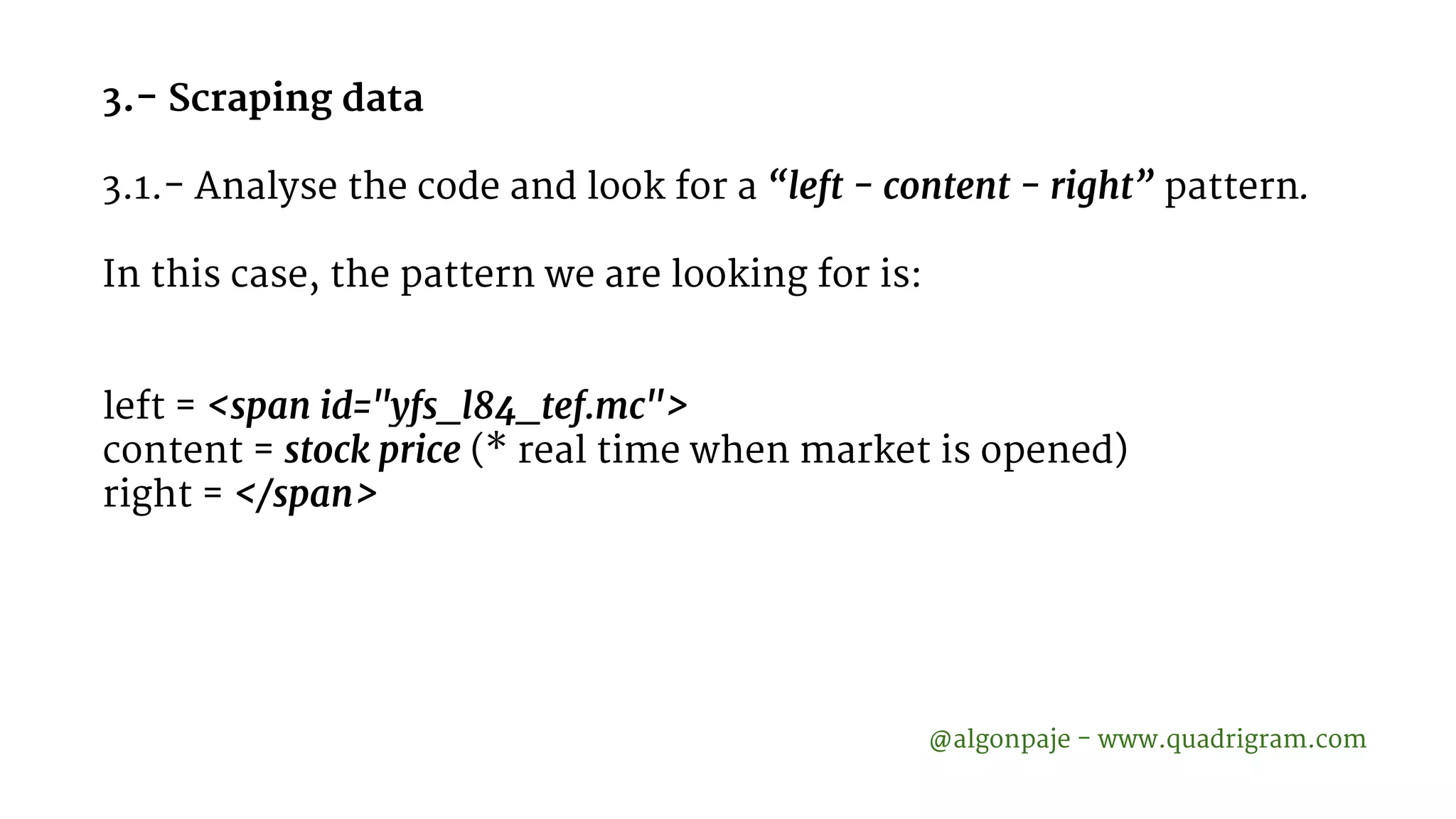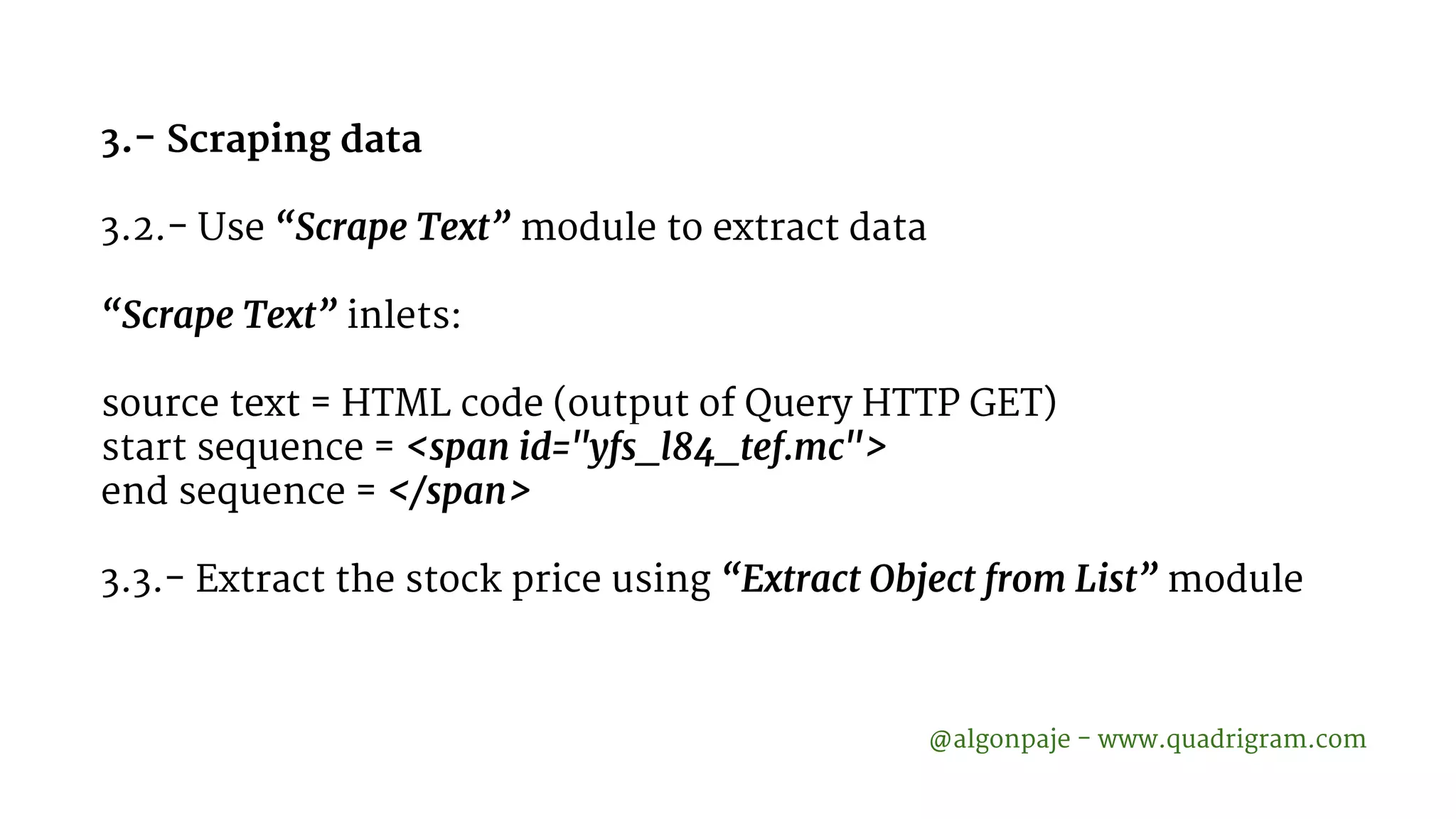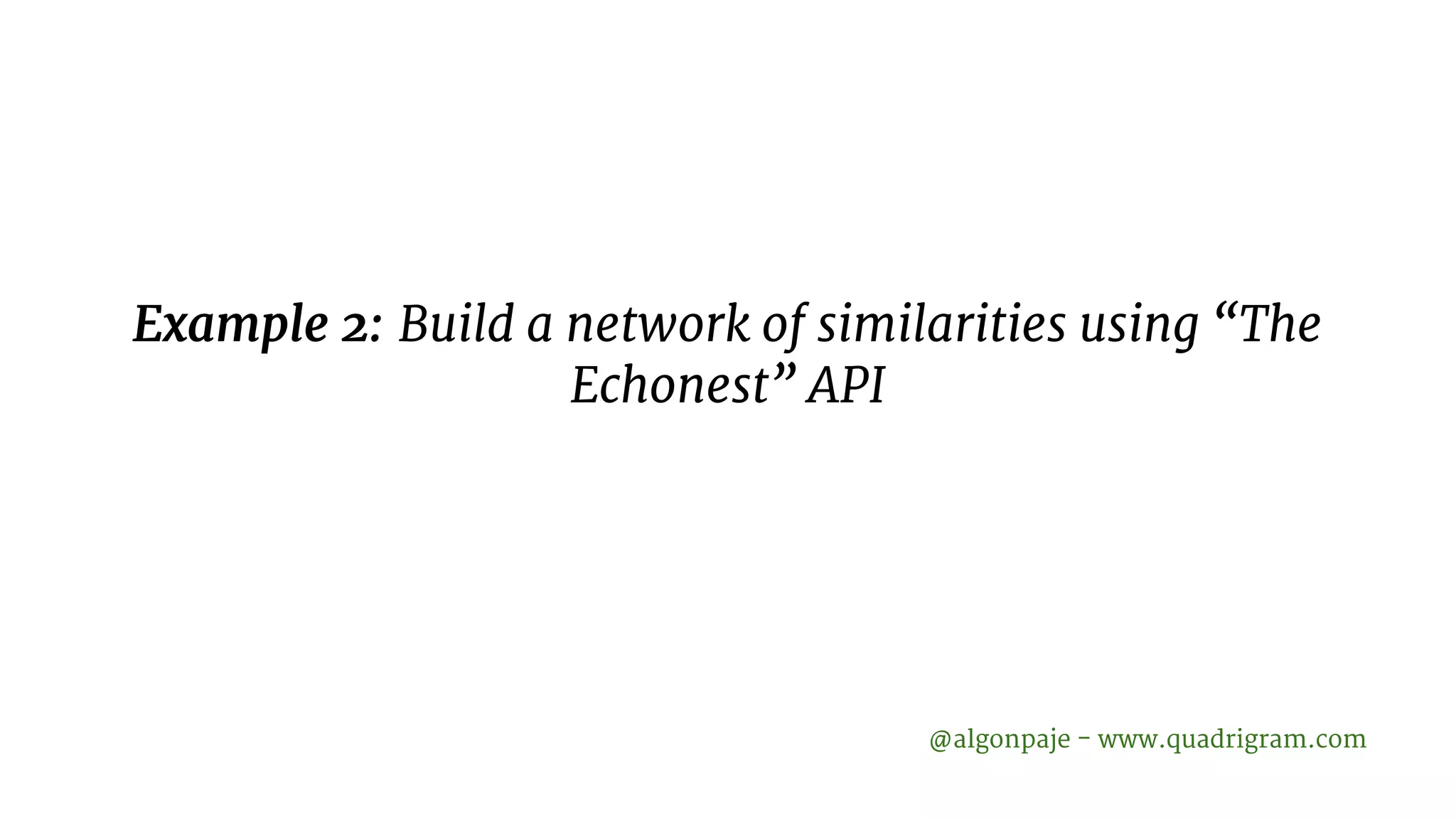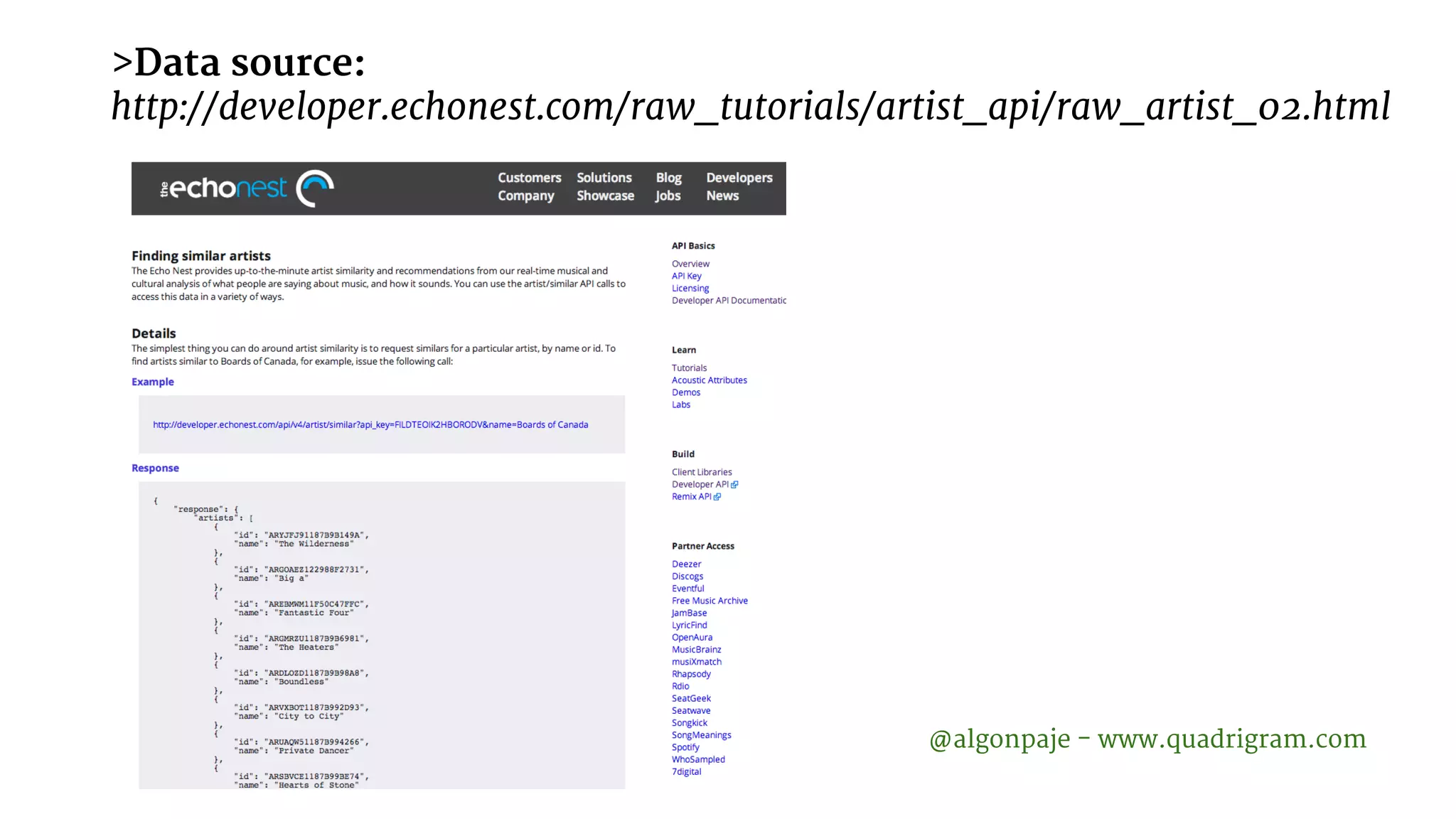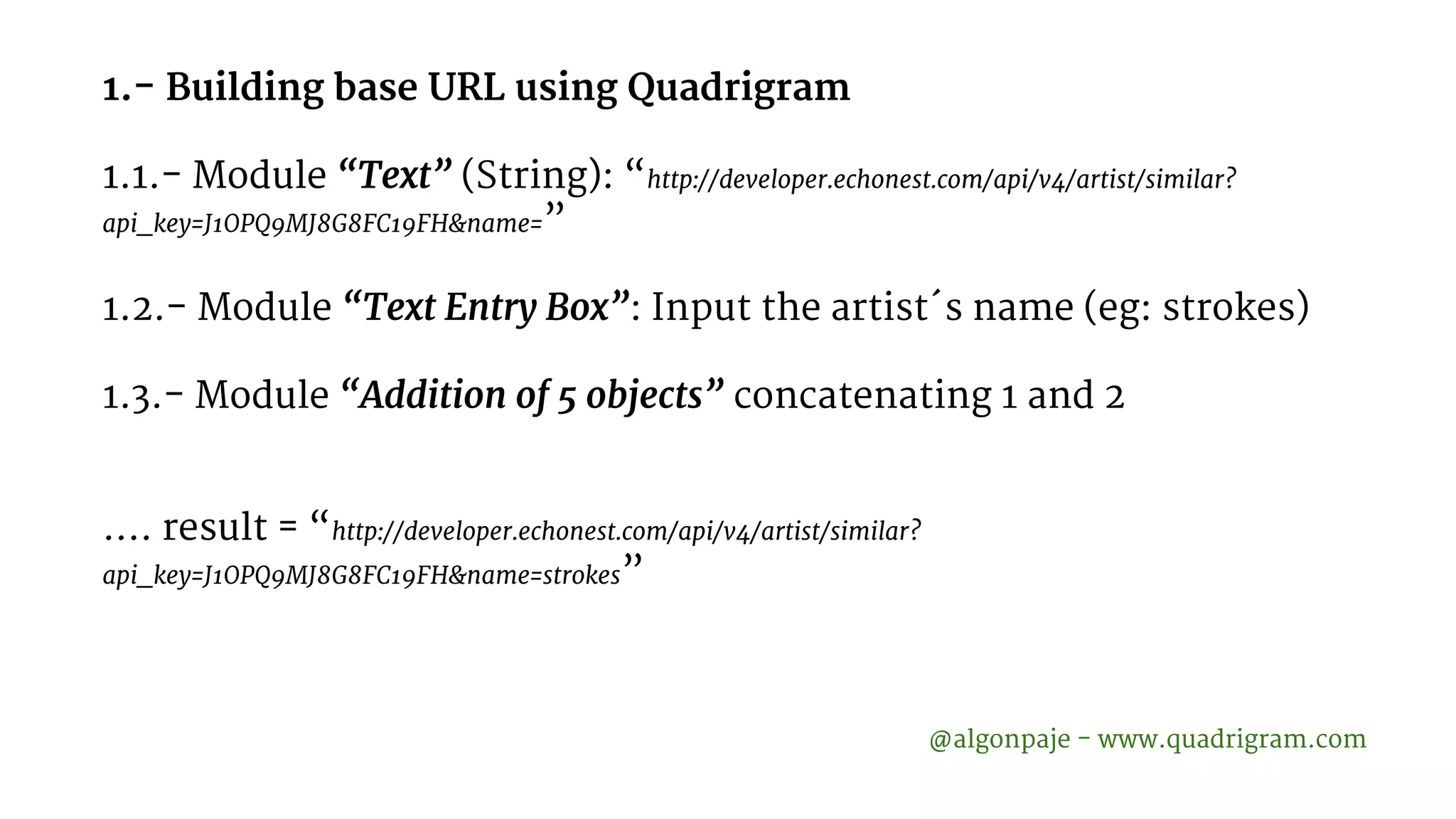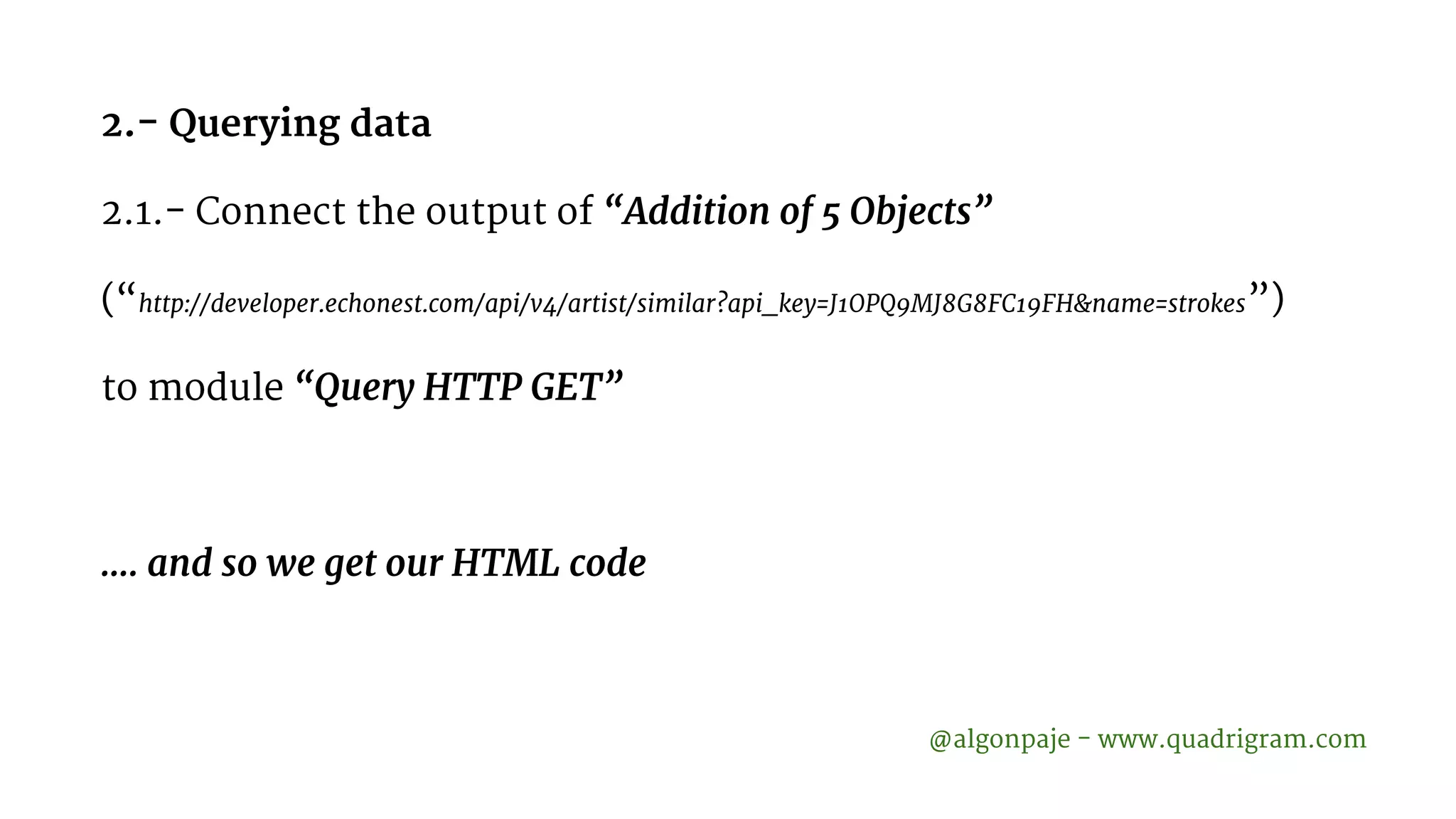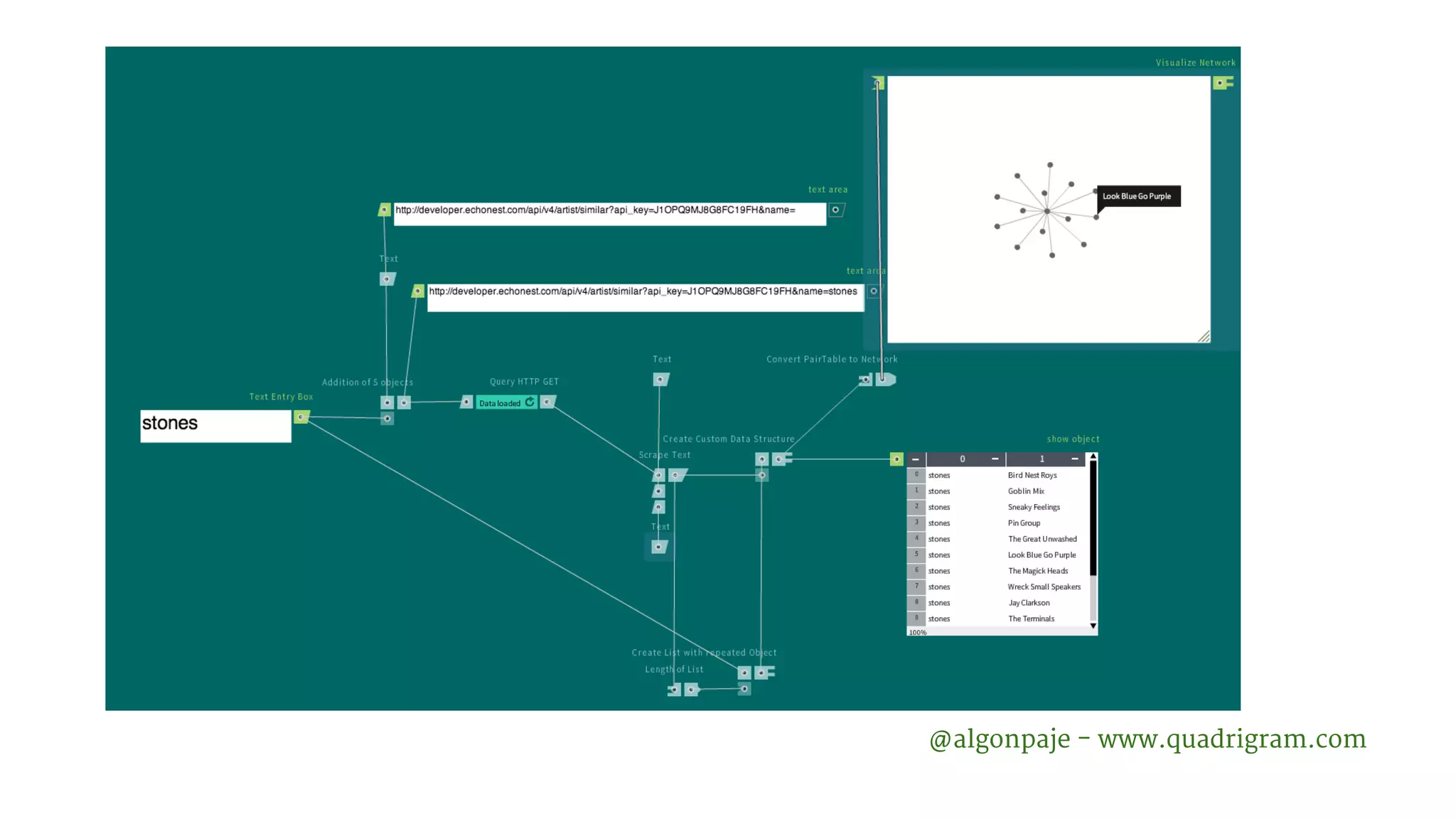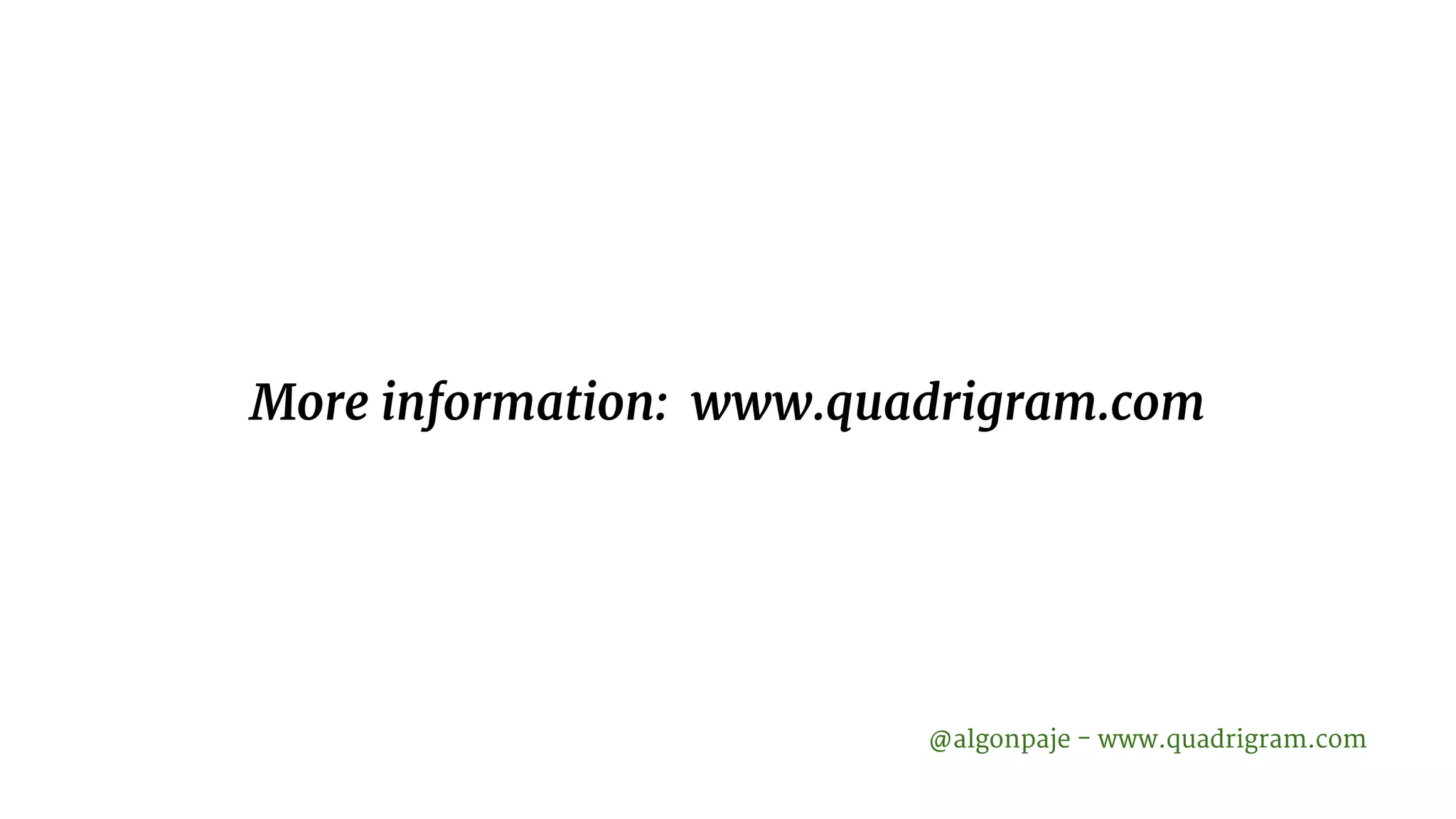This document presents an introduction to web scraping for non-programmers using a visual programming language called Quadrigram, which allows users to gather, shape, and visualize data easily. It provides step-by-step examples for scraping financial information from Yahoo Finance and finding similar artists using The Echo Nest API, employing various modules in Quadrigram to construct URLs, query data, and extract relevant content. The goal is to make data analysis and visualization accessible to users without programming experience.
